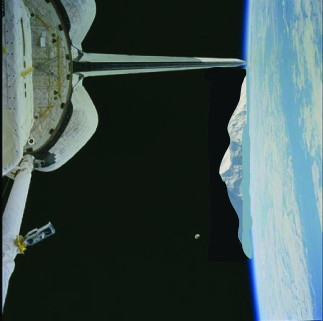This blog post is for teachers in the 12 communities across the U.S. that just started SSEP Mission 10 to ISS. You are invited to use this Challenge with your students to get them thinking about the concept of microgravity (the technical name for the phenomenon of ‘weightlessness’). As part of this Challenge, students are asked to submit what they think is an answer in the ‘Leave a Reply’ section below. Please encourage your students to submit answers, so that all students visiting this blog post can see what other Mission 10 students across the U.S. are thinking. Let’s use this blog post as a social media platform for sharing thoughts about microgravity.
The solution to the Challenge will be posted to this SSEP National Blog on Tuesday, March 1, 2016.
 I’ve heard a lot about this weightlessness stuff, with astronauts having a great time floating around in space. So I wanted to find out first hand what’s going on up there. Since they don’t have a spare seat on the next flight to low Earth orbit (at least not yet), I looked far and wide to find an amazingly tall mountain whose peak rises to the Space Station’s altitude in orbit so I could climb up and see for myself.
I’ve heard a lot about this weightlessness stuff, with astronauts having a great time floating around in space. So I wanted to find out first hand what’s going on up there. Since they don’t have a spare seat on the next flight to low Earth orbit (at least not yet), I looked far and wide to find an amazingly tall mountain whose peak rises to the Space Station’s altitude in orbit so I could climb up and see for myself.
Station orbits the Earth close to 260 miles (420 km) above sea level, and, by the way, crew and station are zipping along at 4.7 MILES PER SECOND (7.6 km/sec) relative to you sitting there at your computer. Bam. The Station just moved 4.7 miles. Really.
It took some Googling, but I found that really tall mountain! See my mountain in the picture? It accidentally got captured in an old Space Shuttle photo. Mt. Everest is only 5.5 miles (8.8 km) high. MY mountain (Jeff’s Peak) is 260 miles (420 km) high. I found it south of the Land of Make-Believe, down a not too well traveled path. Still, you’d think someone would have noticed it since it’s 47 times higher than Mt. Everest. (Have you ever heard of Jeff’s peak? No? See, nobody knows about it!)
So this week, I’m going to take the time to climb my mountain, and in my hand is my trusty bathroom scale, spring-loaded and guaranteed to be accurate at any altitude. I’ll camp out at the top, and I’ll wait until Space Station flies right by my mountain, so I can look in the windows and see if those lucky astronauts are weightless and floating around.
Here now the challenge—
As soon as I confirm they’re weightless in the Space Station, I’ll step on my bathroom scale to see my weight. If I weigh say 150 lbs when I’m standing on my scale in my bathroom at home, what will I weigh on top of my mountain? **
Hint: You don’t actually need to calculate my weight. I’ll do that in the Solution to the Challenge. Your assignment—if you decide to accept it—is to guess what you think I’ll weigh and why. Hmmmm, lots of possibilities.
Submit your guesses below in the ‘Leave a Reply’ section, and remember to include why you think your guess is correct. Students of ALL ages are welcome to post a guess.
I’ll even give you a week to noodle on this in class, and at home with your parents. I’ll post the answer next Tuesday, February 30, 2016, right here at the SSEP National Blog. See you then, and good luck noodling!
Also – if you want to follow along with the latest news from the Student Spaceflight Experiments Program (SSEP), you are invited to subscribe to the SSEP National Blog at the bottom of the right column.
[**Metric system note: in the metric system, weight is measured in Newtons (N). 150 lbs is equivalent to 667 Newtons, which is the weight of a 68 kg mass at Earth’s surface.]
The Student Spaceflight Experiments Program (SSEP) is a program of the National Center for Earth and Space Science Education (NCESSE) in the U.S., and the Arthur C. Clarke Institute for Space Education internationally. It is enabled through a strategic partnership with NanoRacks LLC, working with NASA under a Space Act Agreement as part of the utilization of the International Space Station as a National Laboratory. SSEP is the first pre-college STEM education program that is both a U.S. national initiative and implemented as an on-orbit commercial space venture.
The Smithsonian National Air and Space Museum, Center for the Advancement of Science in Space (CASIS), and Subaru of America, Inc., are U.S. National Partners on the Student Spaceflight Experiments Program. Magellan Aerospace is a Canadian National Partner on the Student Spaceflight Experiments Program.




